Crafting Systems: Why Players Have Fallen for the Forge
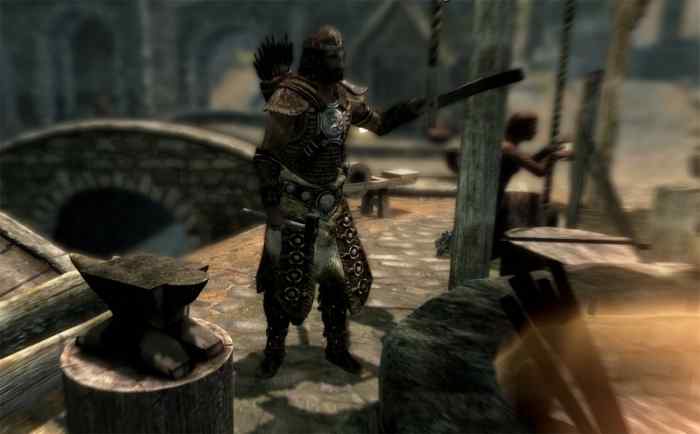
Why do gamers stop to sew leather armor and forge tiaras on the quest to save the world from evil? Crafting has existed since the beginning of video games, but it would be hard to call the interactions of the earliest games a “system” of any sort. The idea of collecting non-essential items for the sole purposes of combining them to create something unique or rare gained popularity around the beginning of the new millennia. While older systems were likely constrained by the limitations of the technology, the fifth generation began implementing features recognizable in modern crafting systems, like Paper Mario‘s recipe list, or Magic & Mayhem‘s crafting-centered monster summoning, not to mention the still-popular RuneScape crafting system and the Final Fantasy VII materia system. To many gamers, these games indicated the first exposure to a mix-and-match or recipe-building experience in a game. But many of these systems left much to be desired, using limited options for customization or feeling scripted.
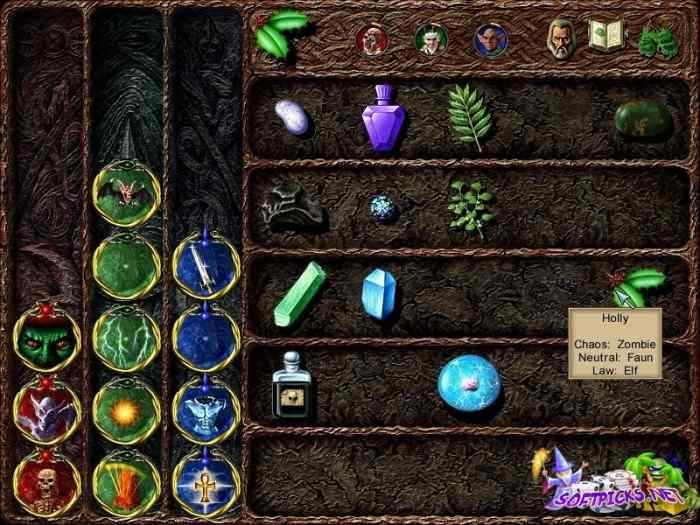
Instead, the modern crafting game often looks more like Mojang’s Minecraft, with virtually limitless room for combination and modification, or like Bethesda’s The Elder Scrolls V: Skyrim, utilizing huge numbers of recipes and the ability to combine recipes to create even more valuable items. But, while the scale may have changed, many of today’s systems still follow the paths carved by these earlier examples, likely because they are addressing the same problems or desires. Skyrim, after all, is just taking the soups and truffles of Paper Mario and replacing them with maces and invisibility potions. So what is the value that has driven the proliferation of the crafting system to so many different games? This is not a simple answer, especially since the implementations in different games show that crafting systems can hold smaller or larger parts of the gameplay, be central or unrelated to the plot, and reward the player in different ways for utilizing the option.
Crafting as a Selling Point
The constant struggle for many AAA developers is to create longer games with more content for less time and money in order to meet the demands of their audiences and consumers. Crafting systems are one possible solution to this ongoing struggle, making huge leaps in possible hours of play with the inclusion of only a couple of rare items. Adding the multiple tiers of swords available beyond the storyline in Dragon Quest Swords accessible via collection and combination of rare items means that a player could spend hours beyond the duration of the game attempting to unlock these items. Meanwhile, Skyrim extends playtime by making several crafting systems reliant on leveling up, encouraging the player to dedicate time to improving their smithing ability to unlock the best items.

However, this interpretation of Skyrim makes the crafting system sound hollow, separated from the rest of the gameplay experience, and used solely to up the hours of play marketed on the game case. This is not the case, as this system also addresses the challenge of making each area of such a large map valuable. Making overarching stories or sidequests to fill the 15 square miles of land–not to mention the countless dungeons, castles, and crevices–would be many more hours of work for approximately the same amount of game time and player interaction as the crafting system. Instead, by filling the ending of an otherwise unimportant dungeon with a vein of rare metals, the player is driven to explore.
This also creates an experience similar to a scripted quest, but driven by the player’s interests instead of developer hours. Considering the wild success of Minecraft before any sort of story or endgame was established, it’s clear that players enjoy the freedom to choose their own objectives and progress at their own pace. Interestingly, this can often be more immersive than the intended storyline because it highlights the experience of active engagement and free choice that makes video games a unique form of entertainment. Hours spent on crafting systems, then, are not necessarily artificial hours tacked on to bump up the market value, and actually provide something for the players as well.
Crafting as a Proving Ground
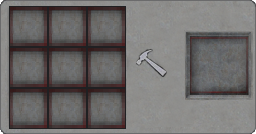
Minecraft has transformed crafting systems from a means to an end, with games like Don’t Starve and Terraria happily playing with the formula and expanding the craze. But is the appeal of Minecraft simply in the freedom to build whatever one desires? This is unlikely, considering Minecraft and its many inheritors market themselves purposefully as survival games, and complicate players’ attempts to gain the most powerful weapons and the most beautiful decorations with complex build patterns, rare resources, and the constant threat of destruction. Instead, the fun of crafting systems like Minecraft‘s comes less from the ability to freely create, and more from the thrill of having done so against all odds.
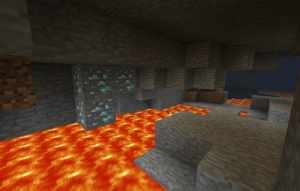
While this is a similar excitement to the one felt when beating a particularly difficult game for the first time, there is another layer that makes it unique and even more enjoyable. In scripted, story-driven games, completion is the result the developer expects from the first moments of creation, and the events of the story will unfold largely the same for multiple players. Meanwhile Minecraft-style games highlight the lack of given objectives and the freedom to choose any approach to solve problems. That is to say, if a player fails to complete a story-driven game, the player could conceivably blame this on poor level design or unintuitive controls caused by the developer, but the player must be fully accountable for being unable to think of a better solution or to choose objectives meaningfully. On the other hand, success in such a game is entirely earned by the player, and a little sweeter for it.
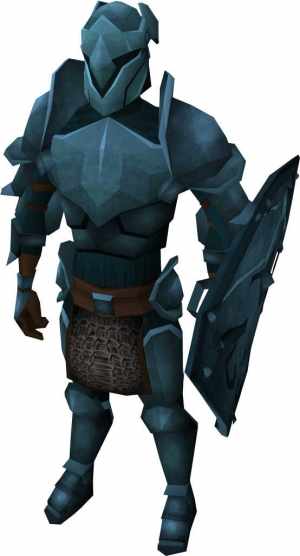
Thus, Minecraft uses its crafting system as symbols of achievement for the player. Each piece of diamond armor the player builds is indicative of his or her ability to choose a goal, overcome unexpected obstacles, and complete that goal. The same is true, to a lesser degree, of most other crafting systems in existence. Including the option to use “masterwork” materials to give crafted equipment rare and powerful benefits in Dragon Age: Inquisition serves not only to reward the player with better stats, but also to give the player a visible representation of their successes. This is especially visible in the enchantment portion of crafting for Skyrim, as the inclusion of distinct glows for each enchantment offers few benefits to the player in a mechanical sense, but serves as a reminder to the player each time the weapon is drawn by glowing brightly.
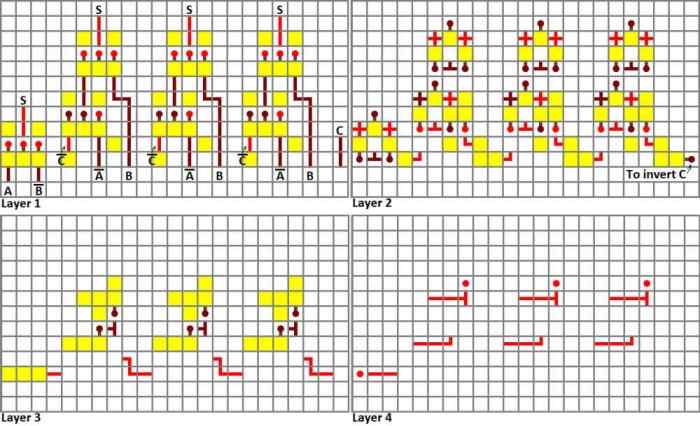
Plus, in this sense, the more difficult the crafting becomes, the more enticing it can be to players. While there is likely an undiscovered upper limit to the viable complexity that a game can still sell, Minecraft‘s wild success proves that players are willing to dedicate hours and dollars to create more and more complex objects for little additional in-game benefit. The growing complexity of redstone engineering, trap construction, automation, and other machinery is virtually endless, but is also its own source of fun for many players, who are interested in showing their creative ability to solve problems. And, again, this often goes back to simply proving what one is capable of, giving players an outlet for tinkering and mechanical interest that does not exist otherwise, as well as a way to indicate this with a construction instead of merely in one’s head or words.
Crafting as an Afterthought
While there are numerous shining examples of crafting systems done well that add depth, complexity, and freedom to a game, most players can also think of crafting systems that they avoided when possible, and survived when not. Consider, for example, the capsule-mixing system of Dragon Ball: Xenoverse. Regardless of the other high and low points of the game, the crafting system sticks out like a sore thumb as troublesome. The intended effect is to give players cheap access to numerous temporary power-ups and healing items by combining materials collected during combat. The end result, sadly, is largely forgettable.

This game does numerous things to remove the power of a good crafting system, of which other games ought to take note, and players should consider avoiding. Specifically, every item that can be crafted is a consumable capsule which the player uses in battle and immediately forgets about. There is no opportunity for the symbolism of success that other games incorporate into crafting systems, whether for the player or for other people. Additionally, the items that can be crafted are often available for marginally more money at a nearby shop, meaning the rarity and uniqueness enjoyed by a Skyrim player and his favorite sword is lost.
Perhaps most unfortunately, however, is that this crafting system interferes with other aspects of gameplay that are enjoyable. For example, many of the crafting materials are gathered in repeatable “parallel quests,” which also happen to give new attacks and equipment items. Whether a player receives a skill, piece of armor, or material item is largely randomized, meaning that a player may have to play the quest numerous times before receiving an item that they actually can show off or use meaningfully. Not to mention that there is such a variety of possible material items that it’s rare to gather enough for any particular item. By randomly granting crafting materials, a real sense of goal-setting and overcoming challenges is instead replaced by a grinding feeling, which is especially demoralizing since each repetition of the quest grants money to buy the item outright.

However, while these design decisions hurt the game that they appear in, they also emphasize again the importance of a good crafting system, and the traits found in the most enjoyable ones. By focusing on symbolic status, overcoming obstacles, and freedom to explore or ignore crafting, crafting systems can help players immerse themselves deeper into a game and spend more enjoyable hours playing it. The proliferation of any design choice eventually leads to many less-than-optimal inclusions, but these examples should serve to move towards more refined and intentional choices in the future.
Crafting in the Proper Place
Regardless of its faults, the crafting system of Dragon Ball: Xenoverse does prove that this system once found only in dedicated role-playing games is slowly creeping outwards. As such, many developers in other genres will be challenged by the market to include crafting systems in games that, traditionally, would not have had one. This is not necessarily a bad thing. Leveling up once followed the same path, living only in Dungeons & Dragons and Warcraft, but now finds itself in shooters like Call of Duty: Advanced Warfare and Splatoon, or fighters such as Injustice: Gods Among Us. None of these are bad choices, because leveling up has become another tool in the developer’s kit for making interesting and unique games. Much the same way, crafting systems are new to many genres, and there will be a period of learning before developers find the appropriate niche to place it in.
Even though there will be some rocky starts, this is an important development in video game design, and indicates a turn towards freer, more interactive, and more rewarding game experiences. By allowing players the option of crafting, games are allowing an expression of uniqueness that breaks away from the traditional model, and intuitively rewarding players who are able to utilize this without punishing players who choose not to. Very few systems have ever been so universally beneficial. This is more than a theoretical standpoint, however, as games with crafting systems that embody the symbolism, challenge, and freedom of good crafting are consistently selling well, such as Techland’s Dying Light, or Minecraft-inspired 7 Days to Die, in addition to the numerous titles mentioned already. Therefore, gamers can happily look forward to ever-expanding options for all of their zombie-killing, dragon-slaying, or mine-digging needs.
What do you think? Leave a comment.





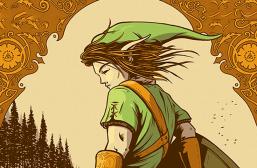





This was a really fun and informative read. I really don’t think that this is something many people think about and yet you were able to tease out a whole article that was in depth and well written. I have to say that this was really enjoyable to read!
My favorite crafting system isn’t in a traditional MMO, and I’ve played a lot of MMOs. Personally I enjoy the crafting system in Minecraft, moreso with the various mods that enhance it. Not only are you crafting items, but you are building structures limited only by imagination, nearly limitless decorating possibilities, etc.
A crafting system that encourages player interaction plus meaningful crafted items. Those are my criteria for a good crafting system. Bonus points can be earned by “resources”, is harvesting easy or are there rare materials? and “a true career”, is crafting something on the side or can you put a lot of time in it and craft full-time? A mini-game is nice, but I do not mind a simple click and finish when the system is perfect on other points.
Star wars galaxies crafting was the best…..period.
Oh, man. The hours that I’ve spent checking harvesters, surveying land and crafting meaningless deeds bring back some fond memories. SWG, in its prime, was an unbelievable game.
He expressed my thoughts on what a good crafting system should be: “rewarding players who are able to utilize [the system] without punishing players who choose not to.” It is the logic behind the success of Kingdom Heart’s gummi ships and Skyrim’s blacksmithing.
I’m glad you mentioned Don’t Starve, because I think that game really utilizes the crafting system for it’s gameplay. There’s no instruction manual when you start the game, so you really have to scavenge for materials in order to craft items that will help with your survival.
I was always impressed with the ambitions of a little known MMO (which has already come and gone for the most part) called Horizons.
Cataclysm DDA probably has the best crafting system.
I enjoy the open ended nature of the crafting. Like, wanna cook meat?
I liked the exclusivity of old school FFXI crafting. There were only a handful of high level blacksmiths and bonecrafters on a server, and you could only learn their names by networking.
The writing on this site gets better and better.
The crafting today is not as dynamic, You have the recipies right before you. Only thing is , how do I get it. You look in the merchant store and u go out and grind it for the currency required for the purchase. And voila! now you got it.
There are certainly some terrible offenders, but we’re also reaching a technologically impressive state where games like Minecraft can exist, and more interested level-editor style inclusions such as the one in Little Big Planet give the player a crafting-like experience with nearly unlimited potential. In short, it all really depends on the developer.
Favs include:
1) SWG
2) FFXIV
3) ESO
4) DAoC
5) WoW
My list are:
– Darkfall
– World of Warcraft
– Lord of the Rings
– Vanguard
– Everquest II
– Ultima Online
– Eve Online
Personally I cannot think of a worse crafting system than Final Fantasy IV has. It is the major reason I don’t play the game and I love to craft. EQ II is another crafting system I do not like and again why I stopped playing that game too.
I quite like Firefall’s system.
Horizons (Istaria) had one of the deepest and most complex crafting systems ever. The fact that EVERY item in game had to be crafted, and EVERY recipe had to be found is what makes it unparalleled to me.
The old Star Wars Galaxies had an awesome crafting system. Recipes didn’t need specific items, just components. Like instead of Iron, it would need A Metal, and what you choose for what parts impacts the final quality.
I don’t mind deep crafting systems but I tend to hate minigame crafting systems. Saying that though, the games I’ve spent the most time crafting in are LOTRO and EQ2.. mainly because the items were extremely useful and made decent money. EQ2’s minigame was annoying though. I mean a minigame where you have to hit the anvil, chop the wood, etc. That would be pretty nice.. but a hotkey crafting game is like playing something crappy on your mobile.
The crafting system in Dead Space 3 was pretty fantastic, unfortunately it had no business being there and (imo) took away from the game.
I’ve never personally been a huge proponent of crafting, but there is undoubtedly a certain type of players that loves the art of creation and trading.
everquest2 is awesome. That one has the deepest and most meanfull crafting system . Especially the stuff you can make for house/guildhall
Everquest 2’s crafting was meh, the crafted gear was bettered by dungeon loot in whatever tier you were in, the crafting mini game could be beaten by pressing 3 over and over, house items were nice, but that’s more a reflection on the housing system rather than crafting.
Only crafted stuff that was worthwhile was the augmentations, but the introduction of that screwed with the in game economy.
A fantastic write-up! Thanks for the article.
Thank you for the read!
The Witcher had a really good potion crafting system.
SWG
UO
Horizons
Vanguard
EVE
Those are the best crafting systems, maybe not the best games (Horizons was a dud). Those games revolved around a player driven economy, unlike themepark MMOs like GW2 or FFXIV….
This saved me a lot of time analyzing other games while tweaking my crafting system this week.
EQ2 and LOTRO; best crafting systems I’ve experienced.
EVE- 99% of EVERYTHING is player crafted and the economy revolves around it.
Excellent topic and great writing.
From my experience Firefall HAD the best crafting.
I love crafting in my games, even seeing the pictures in your articles made me want to go and get my 3DS to start up Rune Factory! Minecraft is a great one for crafting too, as is Atelier Rorona. I like those games where the crafting is something that you have to figure out, perhaps even thinking up recipes yourself!
I enjoyed the layout of the article. There is a fine line to toe between providing too many possibilities and variation in a crafting system and a sort of ordered system of chaos. As a player, when I am confronted with menus upon menus with drop-downs of crafting options I tune out.
What stands out about Minecraft’s system is its aesthetic simplicity. Players enjoy the crafting for the immediate and perceptible results of throwing two components together. This aesthetic satisfaction deepens when the players see themselves running around with the armor they just crafted. The same is applicable in Skyrim.
Fallout 3 stands out as one of my favorite games and the crafting system, therein often gets overlooked. As you mention, players enjoy crafting against all odds. A myriad of choices is overwhelming while a manageable amount and a further experienced incentive makes the experience more enjoyable. In Fallout 3, material which seems to have no purpose in the Wasteland is converted into deadly and useful gear. My qualm with Fallout’s system is the limited number of item recipes (around 5 or 6, I believe), thought it looks like this will be changed for the next game.
In line with this “crafting against all odds” it would be interesting to see more mechanics that implement outside constraints on player’s crafting. For example, a time limit, or a certain material slowly degrades the longer it is kept out of use.
Anyway, I enjoyed the writing, good stuff.
This was an interesting read, and cool to read about the different “types” of crafting systems. I personally feel that in a lot of games they are rushed and put into a game and you HAVE to do them or fall behind and it makes me discouraged as a gamer because I don’t want to HAVE to spend my time wandering looking for 3 true gold diamond unatanium nuggets.
I’m not sure what I enjoy more; Commenters who are reminding me of awesome games from the past or a the collection of passionate crafters who took the time to comment. I have always been a sucker for crafter classes, and although they may seem to be the unsung heroes of MMO’s, they serve an awesome purpose. It’s nice to see a group of people who were as devoted to in-game crafting as I was.
This was a great read. Really showed the importance of crafting in a game and how a good or bad crafting system can really affect a game. I personally love to craft things in games but if the system is bad is bad I really notice it and sometimes it even detracts from the fun of playing the game.
Smart to start from the beginning and work your way forward, rather than start at the beginning of the millennium, as some writers here do. Was expecting mention of SWG, EVE Online, or some MMO’s based entirely on crafting. A Tale in the Desert comes to mind. This was really very well organized. I think you have an insightful understanding of games that you should do something with if you’re not already – more so than just writing articles.